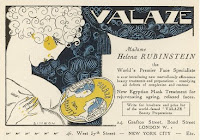Marketing, storytelling and translation memories
Marketing cosmetic products has a lot to do with successful storytelling, which means that translation in this field requires equal measures of creativity and imagination.
I was once asked at a dinner party why I insist on “working from scratch,” foregoing the use of translation memory software and other technologies in my work as expert translator for the beauty industry.
Translation memories are hugely popular with run-of-the-mill translation agencies because they make the translation process so cost-effective. They can be easily used for legal agreements, user manuals and highly repetitive documents of technical nature, but have a limited application in cosmetic translation. Why?
Good marketing is all about telling a compelling story that captures our imagination and holds our attention. Instead of trying to sell a product for its features or benefits, successful marketers have the ability to captivate their consumers by simply crafting a great story.
Cosmetics companies are exceptionally skillful at using storytelling for this purpose. The most prevalent type of storytelling in the beauty and fragrance industry is the “product creation” storyline. These stories are often told to answer the question “why buy this product from us?” They work well because they showcase the company’s values, knowledge of the market and how it identified an unmet customer need.
Sharin g with customers a product’s story is one of the best ways to win them over. Helena Rubinstein, a brilliant innovator and doyenne of cosmetics, learned this lesson early in her career. After starting her business in Australia, the recently arrived Polish émigré named her very first product “Crème Valaze” in order to evoke the sophistication and luxury of Paris. At the same time, she advertised the formula as an invention of a certain Doctor Lykusky from Krakow, made with “rare herbs from the Carpathian Mountains”, deftly weaving her Central European origins into the tale.(*)
g with customers a product’s story is one of the best ways to win them over. Helena Rubinstein, a brilliant innovator and doyenne of cosmetics, learned this lesson early in her career. After starting her business in Australia, the recently arrived Polish émigré named her very first product “Crème Valaze” in order to evoke the sophistication and luxury of Paris. At the same time, she advertised the formula as an invention of a certain Doctor Lykusky from Krakow, made with “rare herbs from the Carpathian Mountains”, deftly weaving her Central European origins into the tale.(*)
The importance of storytelling has become even more vital since the explosion of social media shifted focus to content marketing. The goal is to retain reader attention by creating engaging, meaningful content, while at the same time building brand loyalty.
Translation memories are not well suited for use in translating marketing material that aims at telling a story. Designed not to “replace” a translator by churning out translations out of a vacuum, but rather to capture repeated content for the translator’s future reuse, TM software is in fact of very little help when it comes to more creative, expressive writing. Reusing past content is only relevant when specific requirements of consistency have to be met.
As for the actual retelling of a story in a different tongue, nothing can beat human command of language, its rhythm, structure and nuance, which affect style as well as substance. Translating cosmetic copy is not possible without downright creative input, involving a comparable amount of time and effort to that spent on writing the original.
You can take a great marketing campaign and end up with a pale copy full of passive, tedious translation choices or you can get something equally inspiring and uplifting. The difference lies in how much effort was put into “doing it from scratch”.
(*)Branded Beauty: How Marketing Changed The Way We Look by Mark Tungate



